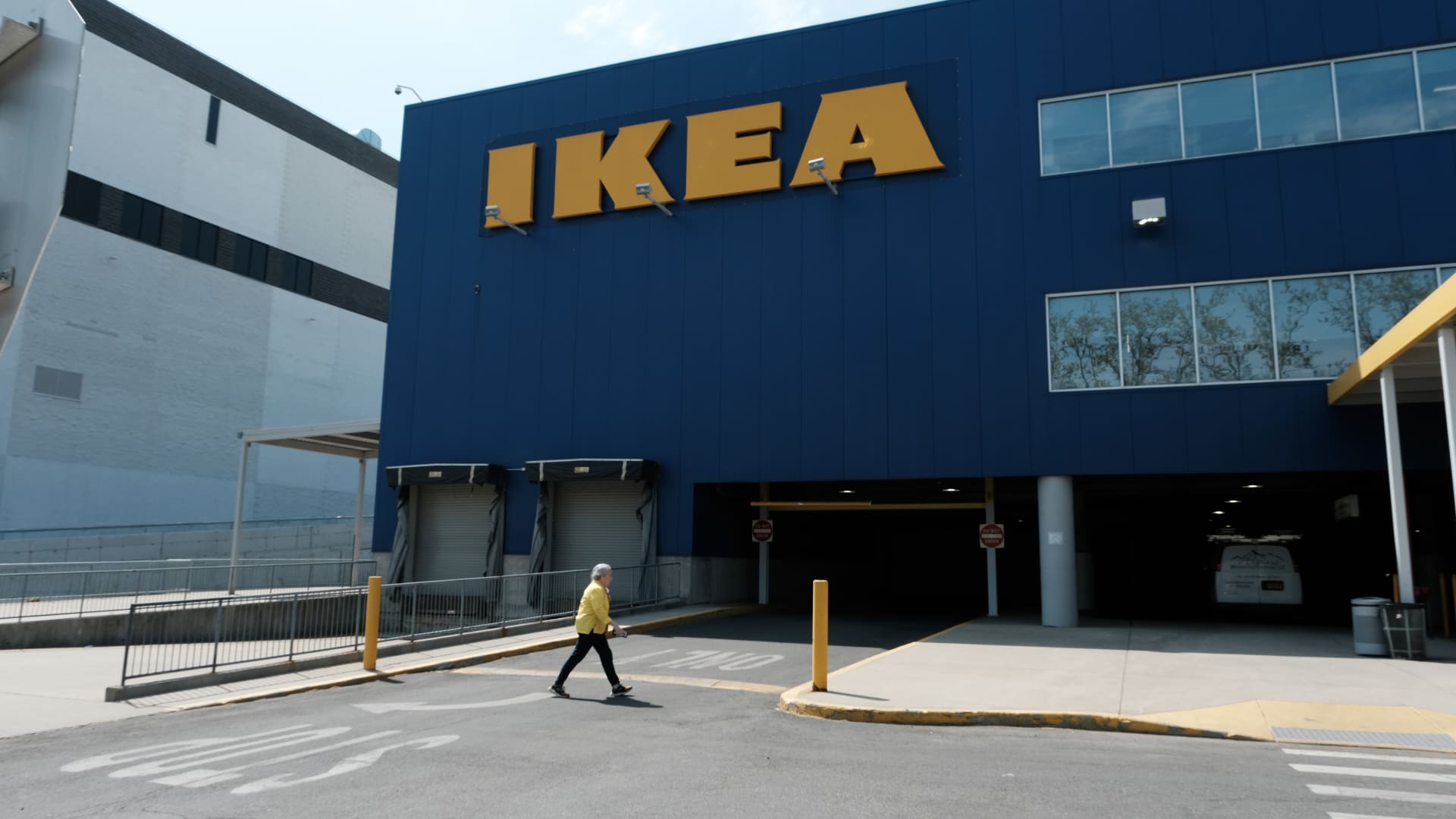Ikea will invest more than $2.2 billion over the next three years on its omnichannel growth strategy in the U.S., marking the Swedish home and furniture company’s biggest investment push since it opened in the U.S. nearly 40 years ago.
Omnichannel retail experiences, where online and in-store shopping experiences complement each other, have become increasingly popular in light of a pandemic-spurred online shopping boom.
Its roots predate the pandemic: In the U.S., the trend was buoyed by Amazon‘s purchase of Whole Foods in 2017, which integrated a host of technological advancements into the in-person shopping experience. Soon, big-box retailers such as Walmart and Target followed suit.
Ikea, already well known for the carefully curated showrooms and model apartments in its flagship stores, has already started making moves toward such a strategy. In recent years, the company has routinely rolled out updates to its at-home augmented reality preview tools. And as a home and furniture company, there’s an added appeal to blending in-store and online shopping, since customers need to envision how products will fit into their existing homes.
The retailer’s $2.2 billion investment will be used for a variety of efforts, including expanding new store models and pickup locations, and is aimed at improving accessibility while keeping products affordable, Javi Quiñones, CEO and chief sustainability officer at Ikea U.S., told CNBC.
“It’s also an indication of how important the U.S. market is for Ikea,” Quiñones said. ”We started here in the U.S. almost 40 years ago, and this is the biggest [investment] we’ve ever done.”
An exact breakdown of how the multibillion-dollar investment is going toward any of Ikea’s specific omnichannel efforts is not yet available, an Ikea spokesperson said.
As part of the investment, the company will open nine “Plan & Order points,” an extension of the company’s existing “planning studios,” where customers can get personalized help on bigger home projects, such as kitchen or bathroom remodels.
Plan & Order points will function just as the company’s planning studios have so far: After consulting with Ikea’s in-studio planners, customers can order items to be shipped directly to their homes. No items are actually stocked for purchasing in the planning studios.
The chain opened its first planning studio in New York’s Upper East Side in 2019, calling it its first “city center” location, and has since gone on to open several other storefronts, but it shuttered its New York store in January 2022, saying it was looking to relocate.
These alternative in-person shopping options are meant to complement, not replace, Ikea’s flagship stores, Quiñones said.
The company is currently “exploring absolutely every single option” when it comes to the ideal placement of these different store models, he added. The first Plan & Order point slated to open this year will be in Arlington, Virginia, with many more in the pipeline, according to Quiñones.
Down the road, some might open in locations that already have an Ikea store nearby, while others might open in cities without any Ikea presence. “The whole intention here is to be closer to many more Americans,” Quiñones said.
As part of that effort, Ikea’s new investment will also see eight new stores added to its existing lineup of U.S. stores. To date, there are 51 stores in the United States. When combined with the Plan & Order points, the addition of those eight stores will usher in 2,000 new jobs at the company, Ikea said.
Ikea is also adding 900 new pickup locations to its slate, allowing customers to retrieve ordered goods from more convenient locations. Like omnichannel retail more broadly, order pickup options have flourished at a variety of retailers throughout the pandemic.
The majority of Ikea’s pickup locations will be tied to Ikea stores, and some stores will have multiple pickup locations, Quiñones said. In some cases, if there’s no Ikea store near the site of a pickup location, orders will be delivered from a distribution center instead, he added.
While Ikea is investing in expanding its pickup options, Quiñones emphasized that the company is still committed to its larger locations, saying that “the full Ikea experience” happens when customers step inside an Ikea store. “Pickup points will be there to just make things more convenient for the customers,” he said.
Ikea’s investment will also fund a continued effort to modernize existing stores, in part by improving energy efficiency, solar panel installations and electric vehicle fleets, Quiñones said.
Those efforts will be crucial for the company’s climate goals: By 2025, Ikea plans to have its home deliveries arrive exclusively via EVs, a key part of its larger plan to reduce greenhouse gas emissions.
